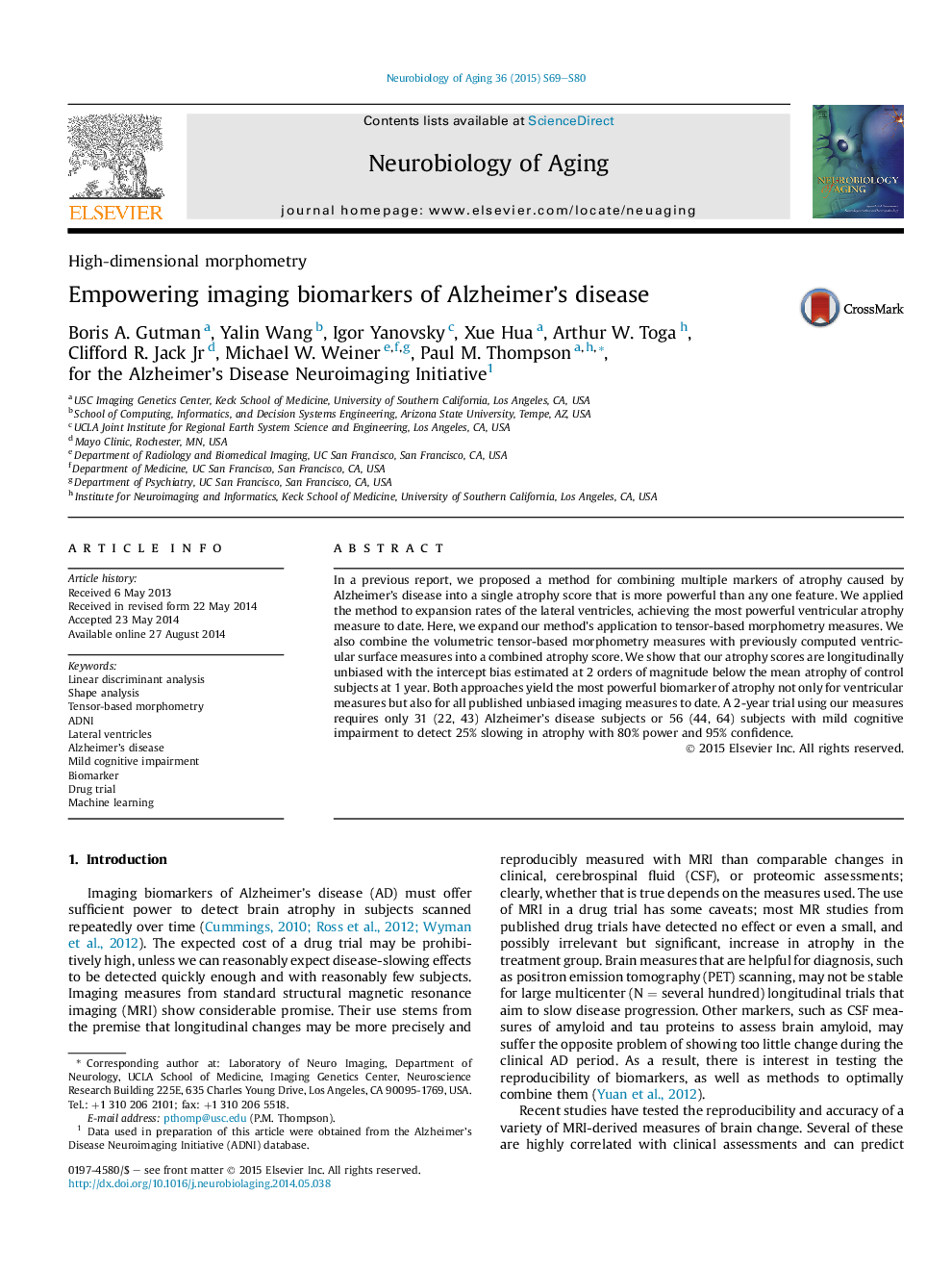| Article ID | Journal | Published Year | Pages | File Type |
|---|---|---|---|---|
| 6805213 | Neurobiology of Aging | 2015 | 12 Pages |
Abstract
In a previous report, we proposed a method for combining multiple markers of atrophy caused by Alzheimer's disease into a single atrophy score that is more powerful than any one feature. We applied the method to expansion rates of the lateral ventricles, achieving the most powerful ventricular atrophy measure to date. Here, we expand our method's application to tensor-based morphometry measures. We also combine the volumetric tensor-based morphometry measures with previously computed ventricular surface measures into a combined atrophy score. We show that our atrophy scores are longitudinally unbiased with the intercept bias estimated at 2 orders of magnitude below the mean atrophy of control subjects at 1 year. Both approaches yield the most powerful biomarker of atrophy not only for ventricular measures but also for all published unbiased imaging measures to date. A 2-year trial using our measures requires only 31 (22, 43) Alzheimer's disease subjects or 56 (44, 64) subjects with mild cognitive impairment to detect 25% slowing in atrophy with 80% power and 95% confidence.
Keywords
Related Topics
Life Sciences
Biochemistry, Genetics and Molecular Biology
Ageing
Authors
Boris A. Gutman, Yalin Wang, Igor Yanovsky, Xue Hua, Arthur W. Toga, Clifford R. Jr., Michael W. Weiner, Paul M. Thompson, Alzheimer's Disease Neuroimaging Initiative Alzheimer's Disease Neuroimaging Initiative,
